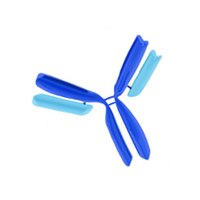DP15L Sigma-AldrichAnti-EBNA Mouse mAb (E8.26)
Anti-EBNA, mouse monoclonal, clone E8.26, recognizes the ~88 kDa wild-type EBNA from EBV-transformed human cells and the ~31.5 kDa mutant EBNA in Raji cells. It is validated for use in WB, IF & IP.
More>> Anti-EBNA, mouse monoclonal, clone E8.26, recognizes the ~88 kDa wild-type EBNA from EBV-transformed human cells and the ~31.5 kDa mutant EBNA in Raji cells. It is validated for use in WB, IF & IP. Less<<Synonyms: Anti-Epstein Barr Nuclear Antigen
Recommended Products
Overview
| Replacement Information |
|---|
Key Spec Table
| Species Reactivity | Host | Antibody Type |
|---|---|---|
| Ma | M | Monoclonal Antibody |
| Product Information | |
|---|---|
| Form | Lyophilized |
| Formulation | Lyophilized from 20 mM ammoinum bicarbonate, 100µg BSA. |
| Negative control | HL60 cells |
| Positive control | Raji cells |
| Preservative | None |
| Quality Level | MQ100 |
| Biological Information | |
|---|---|
| Immunogen | EBNA protein |
| Clone | E8.26 |
| Host | Mouse |
| Isotype | IgG₁ |
| Species Reactivity |
|
| Antibody Type | Monoclonal Antibody |
| Physicochemical Information |
|---|
| Dimensions |
|---|
| Materials Information |
|---|
| Toxicological Information |
|---|
| Safety Information according to GHS |
|---|
| Safety Information |
|---|
| Product Usage Statements |
|---|
| Packaging Information |
|---|
| Transport Information |
|---|
| Supplemental Information |
|---|
| Specifications |
|---|
| Global Trade Item Number | |
|---|---|
| Catalogue Number | GTIN |
| DP15L | 0 |
Documentation
Anti-EBNA Mouse mAb (E8.26) SDS
| Title |
|---|
Anti-EBNA Mouse mAb (E8.26) Certificates of Analysis
| Title | Lot Number |
|---|---|
| DP15L |
References
| Reference overview |
|---|
| Freese, U.K., et al. 1983. J. Virol. 48, 731. Fischer, D.K., et al. 1981. Cell 24, 543. Orellana, T., et al. 1977. J. Virol. 22, 321. Lindahl, T., et al. 1976 J. Mol. Biol. 102, 511. Henle, W., et al. 1967 Science 157, 1064. |







